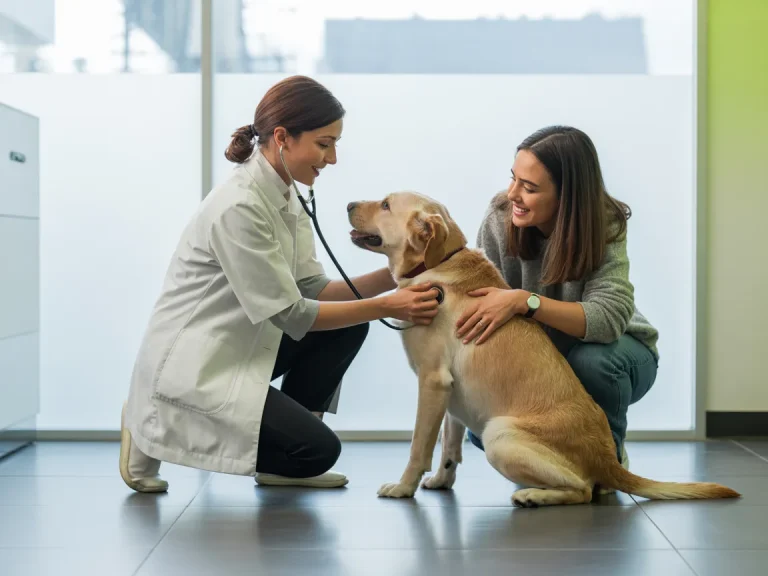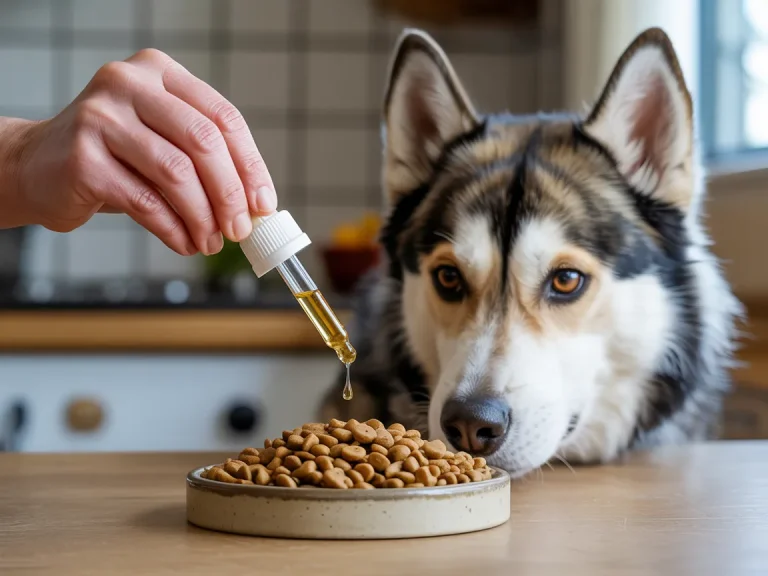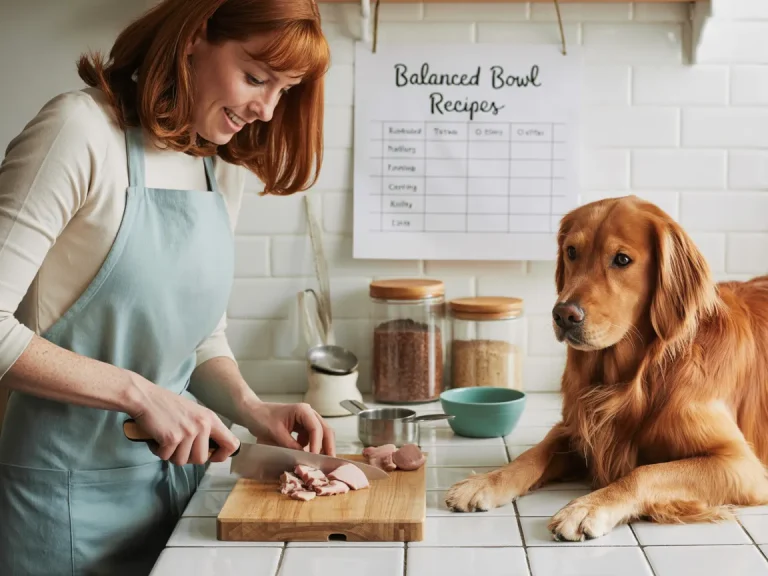A healthy smile does more than look good—it’s a window into your dog’s overall well-being. Just like people, dogs can suffer from plaque buildup, gum disease, and oral discomfort, which can lead to pain or systemic health issues if ignored. Fortunately, veterinarians and veterinary dentists agree—and the AAHA Dental Care Guidelines for Dogs and Cats back this up—that with a few consistent habits and the right tools, you can keep your dog’s teeth clean, their breath fresher, and their grin bright. Below are five dentist-backed tips to help your canine companion flash a sparkling smile.
1. Start Early: Establishing a Daily Routine
Dogs love patterns. Start light, start happy, and start now—whether you’ve got a wiggly puppy working through new teeth or an adult dog set in their ways. Even a 10–20 second “practice session” counts. Touch their muzzle, lift the lip, praise, treat, done. Tomorrow, add a second or two. You’re building trust, not wrestling a crocodile.
Plaque shows up fast—within hours after a meal—and turns to tartar in just a few days. Daily attention keeps the grime from hardening into that rock-like stuff your vet has to chip away. Think of your routine as simple puppy teething care grown up: short, sweet, and repeatable.
Skip the minty human paste (it can upset stomachs). Go with a vet-formulated dog toothpaste and a soft finger brush or canine toothbrush. Pair each step with something your dog loves—gentle praise or a tiny treat—so they think, “Mouth time equals good things.”
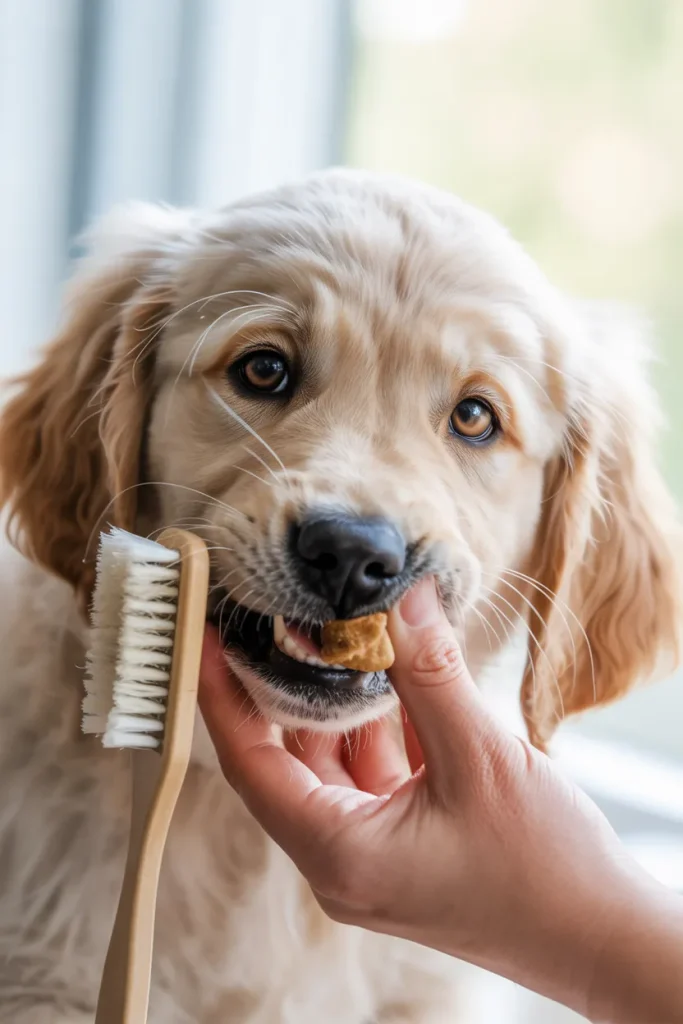
2. Master Proper Brushing Technique
Brushing is where the magic happens. Most owners do quick swipes and hope for the best, but a few small tweaks turn “meh” into money.
Aim the brush at about a 45° angle to the gum line. Use relaxed, little circles, like you’re polishing a tiny doorknob. Focus on the outside surfaces—cheeks and lips naturally press plaque there—and don’t forget the back molars and those big canine teeth that do all the heavy lifting.
How often? A few times a week is good; daily is gold. Got a toothbrush skeptic? Split it up. Do a few teeth today, a few tomorrow. Keep sessions short, end on a win, and you’ll see tolerance climb fast. It’s the dog teeth brushing technique that sticks: gentle, consistent, and never a tug-of-war.
Common pitfalls to ditch: pressing too hard (hello, sore gums), ignoring the back teeth, and only brushing when you remember after dinner instead of making it its own simple routine.
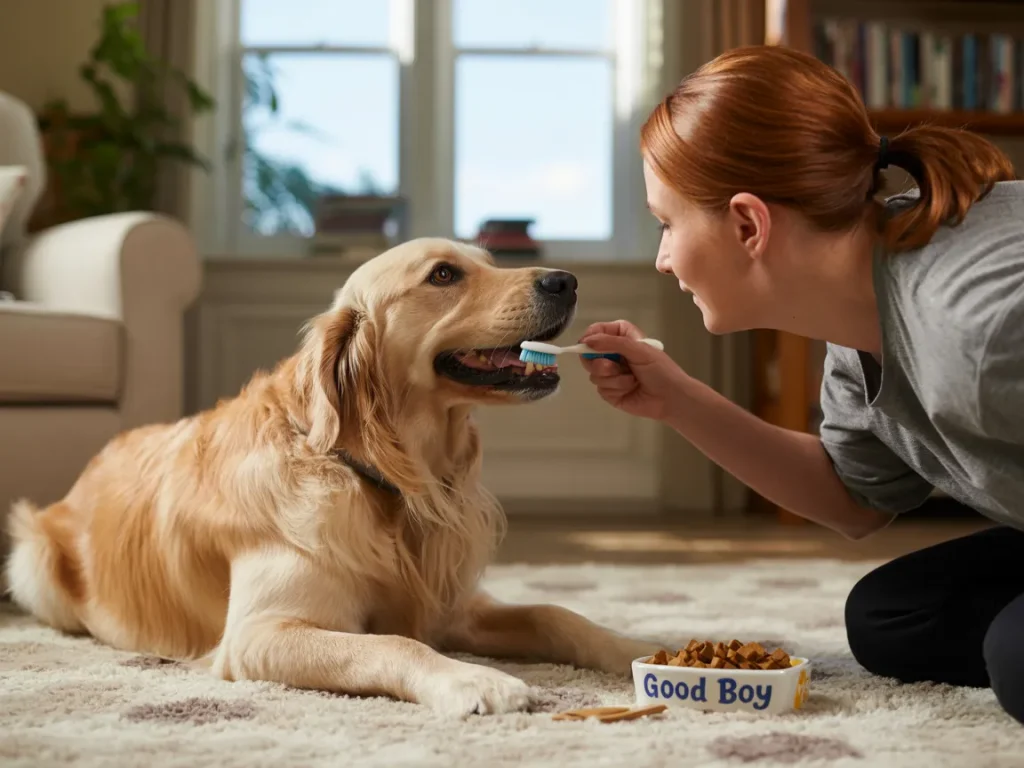
3. Choose Complementary Tools: Beyond the Brush
Brushing is your MVP, but smart support players make the whole team stronger. Dental chews, water additives, and well-designed toys help reduce plaque and keep gums happy between brushings.
A well-chosen dental chew acts like a gentle scrubber. Look for products with the VOHC Seal of Acceptance and match the size and density to your dog. And here’s a pro note: super-hard chews can crack teeth in strong-jawed breeds. If you’ve got a Doberman (or any powerhouse chewer), pick safer textures and supervise—no heroics required.
Water additives and oral rinses can reach nooks your brush misses, freshening breath and dialing down bacteria. Use them exactly as directed—more isn’t better, it’s just more.
Rubber or soft nylon toys with grooves invite chewing and saliva flow (nature’s built-in rinse cycle). Introduce one new tool at a time so you can see what actually helps. Chews and toys aren’t a substitute for brushing, but they’re excellent wingmen for dog dental chews and overall oral care.me. If using a chew, offer it on days you’re not brushing, not as a substitute but as a complement.
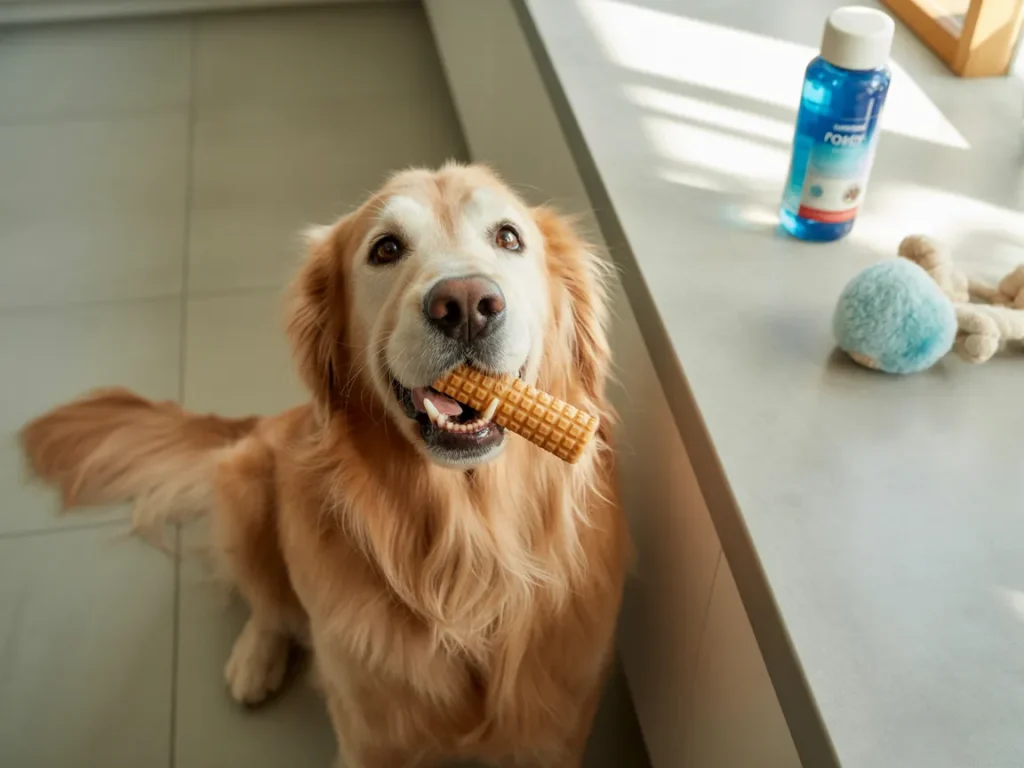
4. Recognize Warning Signs Early
You don’t need a white coat to spot when your dog’s mouth isn’t happy—just a curious eye and a quick sniff test. If their breath could wilt a houseplant, gums look red or puffy, or you’re seeing yellow-brown buildup hugging the gumline, it’s time to pay attention. Add in clues like drooling, pawing at the face, shying away from crunchy food, or a tooth that looks loose or oddly colored. And if your usually goofy grinner suddenly shows their teeth with a tense, “don’t touch me” look, that’s not attitude—it may be pain talking.
When in doubt, book a vet check. A professional dental exam often includes a thorough cleaning under anesthesia so the vet can peek under the gumline—where the real troublemakers like to hide. Catching problems early is kinder on your dog and your wallet. under anesthesia so the vet can inspect beneath the gum line, where serious issues often hide.
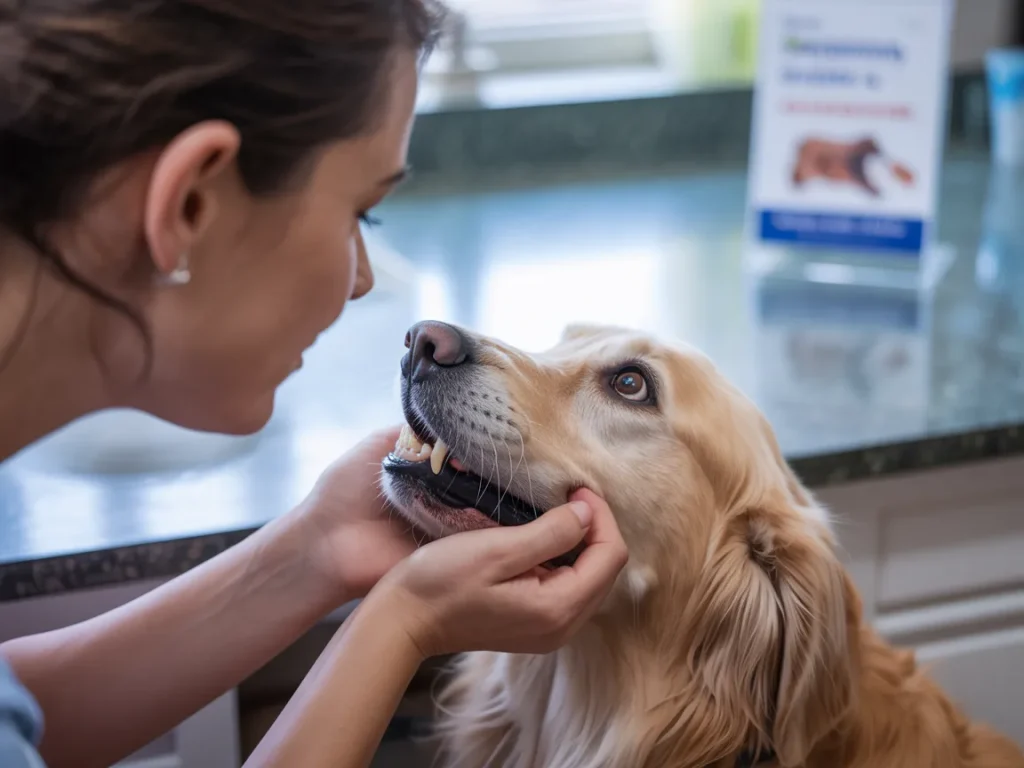
5. Diet and Chew Strategy for Long-Term Health
Food and chewing habits shape your dog’s “oral neighborhood.” The right choices keep things tidy; the wrong ones invite plaque to throw a party. Some kibbles are designed to lightly scrub teeth as your dog crunches. Sticky treats? They’re like caramel on braces—fun for a second, then a sticky mess for hours. Support those gums from the inside, too: omega-3s and antioxidants can help keep tissues calm and resilient.
After meals, offer a safe, vet-approved dental chew or a well-made chew toy to nudge away leftovers and jump-start saliva (nature’s rinse cycle). Watch your chewer: hard-as-rock objects can crack teeth, especially in power chewers, while seniors or sensitive pups often prefer softer, dental-focused options. Keep sessions reasonable—chewing is great, but marathon gnawing can wear teeth down.
Bonus Expert Insight: Managing Anxiety Around Dental Care
Plenty of dogs think tooth time is weird at best and scary at worst. That’s okay—you can reframe the story. Start by pairing gentle mouth handling with something amazing: a high-value treat or a calm, happy voice. No brushing yet; just a quick lip lift, a touch on the gums, reward, done. Next, let them lick a dab of pet toothpaste off the brush like it’s a spoon of peanut butter. Progress in inches, not miles.
Each tiny win—two seconds of brushing a canine tooth, one swipe on a molar—earns praise and a treat. Keep sessions short and predictable, end on a high note, and you’ll see confidence grow. If anxiety stays sky-high, loop in your vet or a veterinary behaviorist; tools like pheromone diffusers, calming supplements, or a customized desensitization plan can make dental care feel as routine as a walk around the block.ing supplements, or behavioral conditioning to make dental care less stressful for both of you.
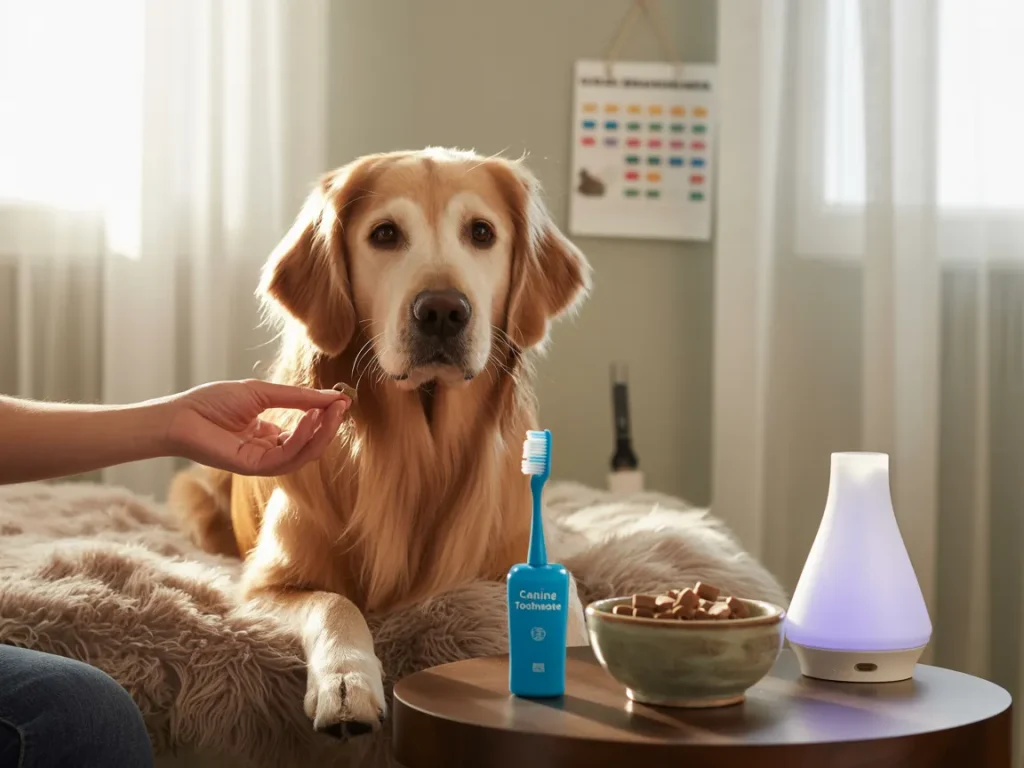
Putting It All Together: Weekly Smile Maintenance Plan
Want an easy rhythm you can actually stick to? Here’s a simple, real-life plan that keeps things tidy without eating your entire evening.
- Daily (or as often as you can): Brush a few key teeth and do a quick, positive mouth-handling session—lip lift, gentle praise, tiny treat, done.
- 3–4× per week: Offer a vet-approved dental chew or use a water additive to back up your brushing.
- Weekly: Do a quick “smile check”—peek at gum color, look for yellow-brown buildup, and notice if crunching seems uncomfortable.
- Monthly: Reassess tools and chews. Power chewers (hello, Dobermans) may need safer textures to avoid tooth wear.
- Annually (or as your vet suggests): Book a professional dental exam; deep cleanings catch what home care can’t.
This layered routine—quick daily cleaning, smart supports, regular check-ins, and pro help—keeps that grin bright above the gumline and healthy underneath it.nal oversight—keeps your dog’s smile not just sparkling, but healthy beneath the surface.
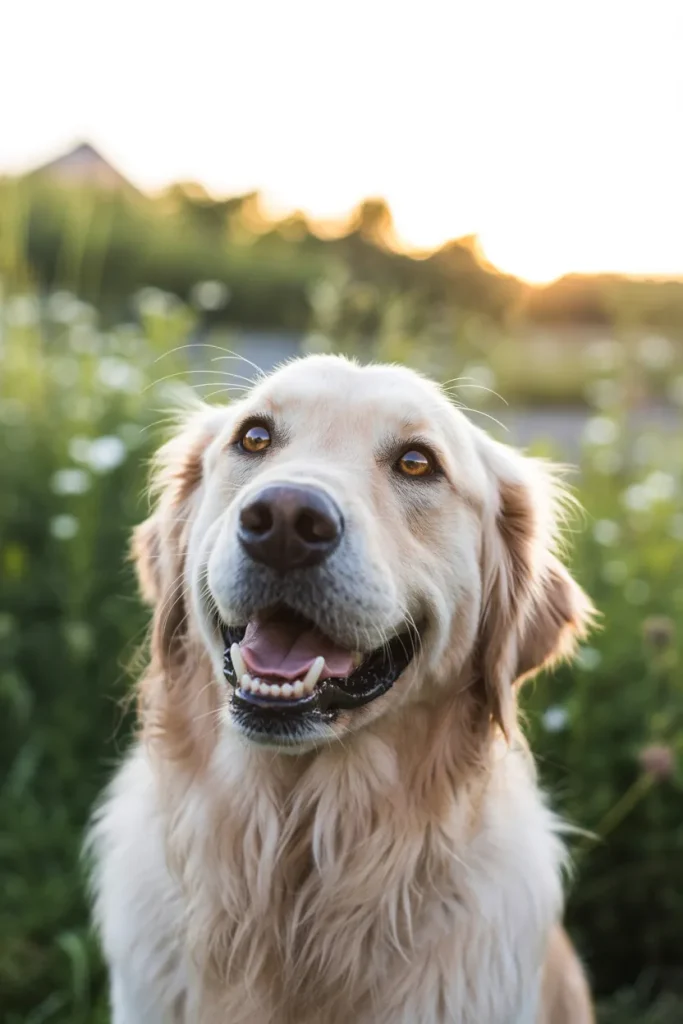
Conclusion
Healthy dog teeth aren’t about perfection; they’re about small, steady wins. Start early, brush well, back it up with safe chews and a sensible diet, watch for red flags, and keep stress low so tooth time feels as normal as a walk around the block. From wiggly puppies to strong-jawed adults, these dentist-backed habits are your road map to a smile that shines—and a dog who eats, plays, and snores beside you in comfort. That’s the real payoff, right?
Disclaimer: This article is for informational purposes only and does not constitute professional veterinary advice. Always consult a licensed veterinarian or certified dog trainer regarding the specific needs and health of your dog.

